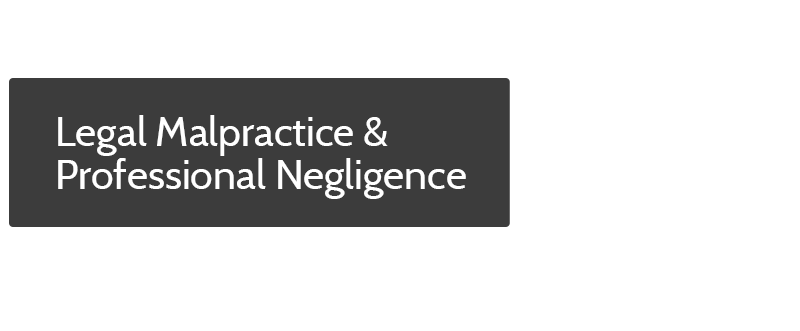When Has a Lawyer’s Negligence Damaged a Client?
WITHOUT DAMAGES, A LEGAL MALPRACTICE ACTION CANNOT PREVAIL.
Damages–meaning a legally recognizable harm or injury–is a mandatory element of a legal malpractice (professional negligence) action.
This means that a plaintiff must be able to prove that the attorney’s breach of a legally recognized duty caused the plaintiff to suffer some harm or injury. Moreover, the injury must be of a type that the court will recognize as “damages.” While many plaintiffs believe that they deserve to recover from a negligent attorney even in the absence of money lost or other legally-recognizable injury, merely because the lawyer “should not have acted the way (s)he did,” the law does not allow imposition of damages or liability unless some legally-recognized harm or injury resulted from the lawyer’s wrongful acts.
THE PLAINTIFF’S DAMAGES CANNOT BE MERELY NOMINAL OR SPECULATIVE.
Nominal damages – meaning damages which do not have any significant monetary measure or value – are not enough to sustain and support a legal malpractice action. Similarly, the damages suffered by the plaintiff must be actual damages that have already occurred (or are occurring on an ongoing basis). Generally, future harm is insufficient unless its occurrence is definite and unavoidable, or unless some measurable damage has already taken place. Moreover, speculative damages — harm which might or might not occur in the future — will not support a legal malpractice claim.
However, plaintiffs should not delay consulting with an attorney about a former lawyer’s malpractice or wrongful acts just because the plaintiff does not know, for certain, whether damages have occurred. Plaintiffs may have incurred sufficient damages to proceed, whether or not they can point to financial harm. Always consult an attorney as soon as possible if you believe you have a claim for legal malpractice. Delay could damage your claims or cost you to lose your legal rights.
THE PLAINTIFF HAS THE BURDEN OF PROVING DAMAGES IN MALPRACTICE CASES.
In order to prevail in a legal malpractice case, the plaintiff must prove that:
1. The Plaintiff suffered legally recognizable damages.
2. If the plaintiff’s damages included the loss of a favorable judgment in a previous or underlying case, the plaintiff must also prove that (s)he could have actually collected that judgment from the defendant in that action. This is important, because it may impact the amount of the judgment the plaintiff can subsequently collect from the negligent lawyer.
***
Disclaimer: THIS ARTICLE IS FOR INFORMATIONAL PURPOSES ONLY, AND DOES NOT CONSTITUTE LEGAL ADVICE OR CREATE AN ATTORNEY-CLIENT RELATIONSHIP BETWEEN THE AUTHOR AND ANY PERSON. Your rights and experiences may vary. Never use an online article (including this one) to evaluate your legal claims. Speak with an experienced lawyer promptly to obtain a personalized evaluation of your claims, possible damages, and options. You may lose or compromise your rights if you delay in consulting legal counsel. Malpractice (professional negligence) claims are complicated and fact-dependent. If you believe you have a claim against an attorney who represented you, or any other type of legal claim, consult an experienced lawyer immediately for an evaluation of your personal rights and claims.














